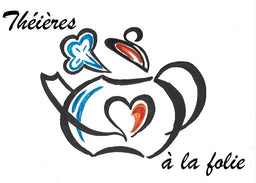Summary :
It has its origins in the Chinese Tang and Song dynasties as a kettle, it was introduced to Japan in the 1780s through Japanese monks returning from China. Its high-quality cast iron obtained using a traditional technique, with its texture and rustic shape, is attributed to Japanese know-how and spread in Japan, at the same time as the fashion for sencha developed at that time. Indeed, in the middle of the 17th century, China introduced Japan to a kind of loose leaf tea, sencha, which however did not yet have the success that matcha, the powdered version, had. This quickly became a fashion, especially in wealthy society. This is how tetsubin became more and more fashionable. Around 1800 with sencha becoming really popular among the rich Japanese, the iron kettle was gradually introduced and revisited in its manufacture and taken over by artists of the time. It was therefore during the 19th century that the simple models of kettles that were the tetsubins became real, very elaborate masterpieces, however very influenced by Chinese culture (calligraphy, poems and Chinese quotes, etc. .)
The Japanese cast iron teapot did not become popular until the 18th and 19th centuries, increasing until the start of the World War when it faded into obscurity. It was the Taiwanese who were the first to rediscover the interest in collecting old tetsubins.
The authentic tetsubin is made of cast iron without enamel. Some kettles are treated in the Japanese style, that is to say that to activate natural protection against rust, oxidizing cooking is carried out at 800°C: cast iron is not porous, the oxidation process does not can spread to deeper layers and the rust remains on the surface creating a barrier against itself. Or the pot can also be covered with a natural tree lacquer, a vegetable fat which gives the internal wall a black appearance. You can also allow limescale to appear after repeated use of the teapot; this accumulated layer is a natural anti-rust agent.
And then we have the Chinese way, the cast iron teapots are coated with an anti-rust coating that withstands the strong heat source.
A little word all the same on the molding of cast iron, we can retain 3 essential techniques, without dwelling too much on them, the explanations being very technical.
The paraffining method, which allows the manufacture of a single, precious model, a collector's item. The model of the casting is made of beeswax, and will be destroyed after casting and does not require demolding, resulting in a unique model.
The sand method, which is a natural gravity casting method, its distinctive feature is that the body of the pot has a horizontal stripping line which is in a circle around the maximum diameter of the teapot. This process is the reference of a craft still present today.
The die casting method, with a mold made of steel and other metal resistant to high temperatures. A pump is used to inject the iron at high temperature. Its particularity is that the unmolding line is vertical with a right part and a left part located at the level of the nozzle. We recognize this process by the smooth interior finish of the pot, while the finish is more rustic in the case of sand casting.
A kettle without enamel, the tetsubin in this case, allows the water to become enriched with iron during boiling. The result is modified water which produces a smoother, even sweeter tea. As a result, each cup of tea, coffee, or plant provides users with an iron supplement, which is good for their health. When it comes to water heaters, cast iron remains the right material; it heats up quickly, retains heat for a long time and releases it in a coherent and balanced manner. However, it is better to avoid letting the water cool in the kettle to prevent rust from appearing. If there is unused hot water left, why not put it in a thermos? the kettle will thus be dried and rust-free.
The enameled cast iron teapot of modern times.
Today, the tetsubin is above all the kettle offered by tea lovers for boiling water during the Japanese matcha tea ceremony.
As European and Western markets grew, in the late 1990s, a new colorful design appeared, tetsubin became a popular and sought-after product around the world. Little by little, the cast iron teapots were enameled on the inside to prevent rust. However, we know that the iron released in tiny quantities is useful for the taste of water and tea. Enamel, from this point of view, deprives you of the benefits provided by iron. Tetsubin was originally used for green tea, but all teas are welcome in a cast iron teapot, whether enameled or not.
Maintenance: rust can appear if the teapot is poorly maintained, poorly dried or with stagnant water. However it can still be used, rust is not toxic, in fact many tea lovers prefer the taste of tea from a rusty teapot, this of course concerns quality cast iron.
The simplest technique: boil 2/3 of the water, then drain it of the water that is loaded with rust. For greater rust, boil green tea, reduce to 20% and repeat 2 or 3 times. Or also cook rice in tetsubin.


